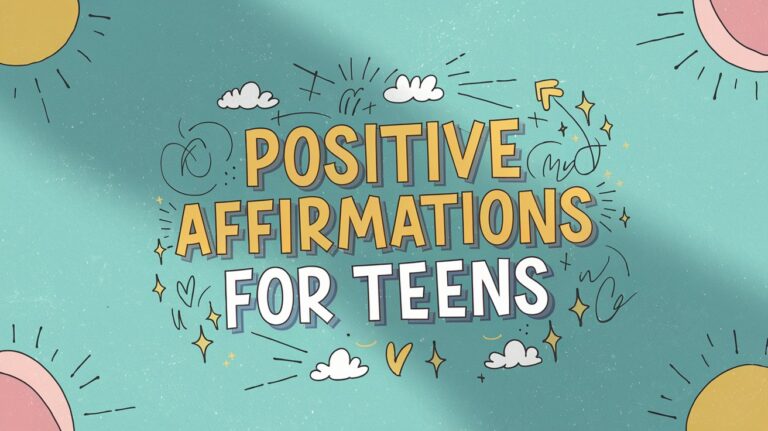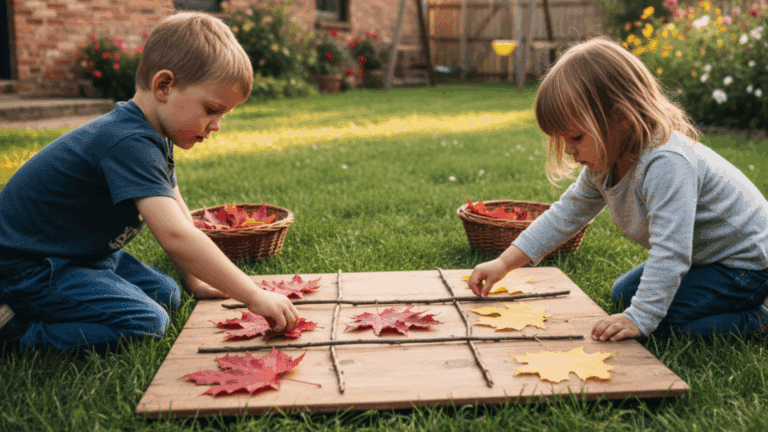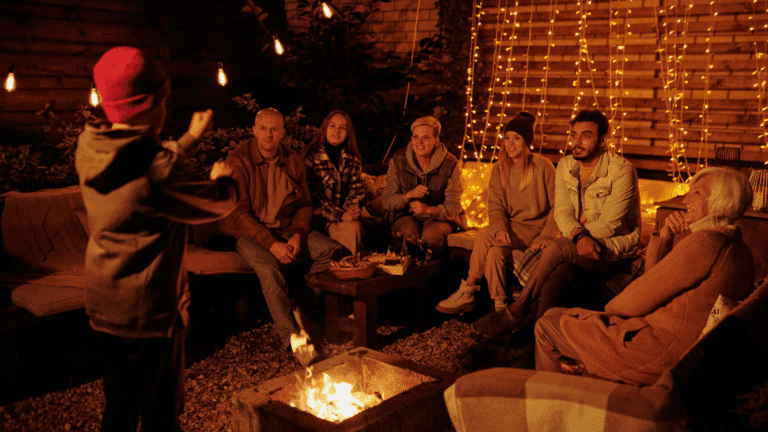Ah, The family road trip! “Are we there yet?” becomes the soundtrack to your summer getaway, and someone always needs to pee right after you’ve passed the last rest stop for 50 miles.
But here’s the thing: those backseat battles don’t have to turn your car into a mobile wrestling arena. With the right games up your sleeve, you can turn your cranky passengers into giggling co-pilots.
These road trip games are about to become your secret weapon. Because a peaceful car ride is parenting gold, and everyone deserves to arrive at their destination with their sanity intact.
Why Are Road Trip Games Important for Kids
Road trip games for kids aren’t just random fun; they’re secret weapons for surviving long car rides with happy kids. When you’re stuck in a car for hours, these games make the difference between peaceful family time and chaos.
Road trips offer a unique opportunity for bonding. Kids learn to take turns, follow rules, and play fair in a confined space. These games teach patience, good sportsmanship, and how to have fun as a family unit.
Let’s be honest – road trip games make parents’ lives easier. They reduce screen time dependency, minimize sibling squabbles, and create positive memories instead of stressful ones. Plus, they’re free entertainment that works anywhere.
Many road trip games sneak learning into fun. Kids practice math, spelling, geography, and observation skills without realizing they’re getting smarter. It’s like giving them vegetables disguised as candy.
Fun and Creative Road Trip Games for Kids
Road trips can be long and sometimes boring, but with the right road trip games for kids, kids can stay engaged and entertained throughout the journey.
These games not only pass the time but also encourage learning, creativity, and teamwork.
1. I Spy
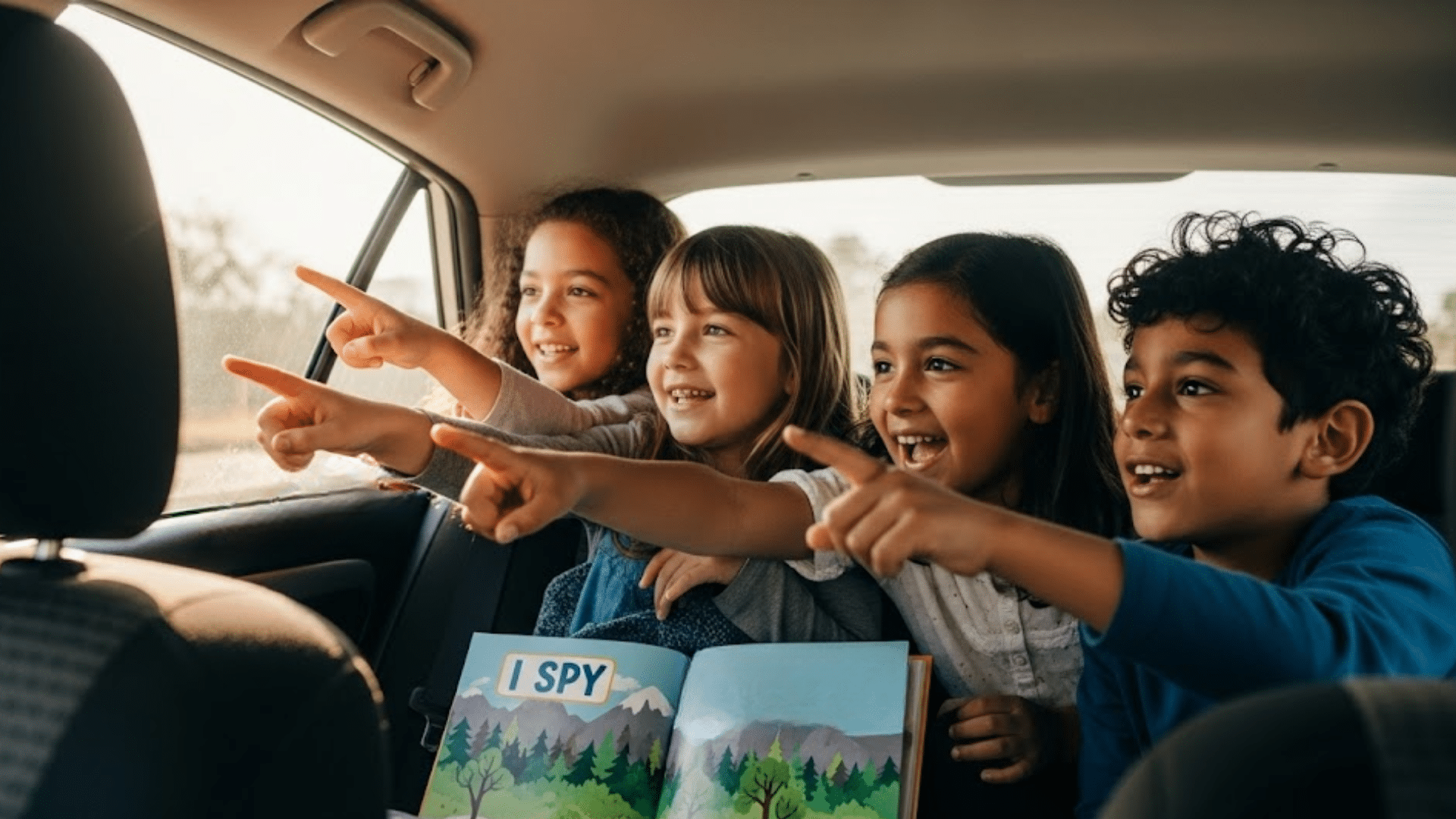
One of the classic road trip games for kids, where players take turns saying, “I spy with my little eye, something…” and give a clue about an object they see.
- Why it works: Keeps kids engaged by encouraging them to observe.
- How to play: One player offers a clue about something they see, and others guess.
- Tip: Start with easy-to-spot objects for younger players.
2. 20 Questions
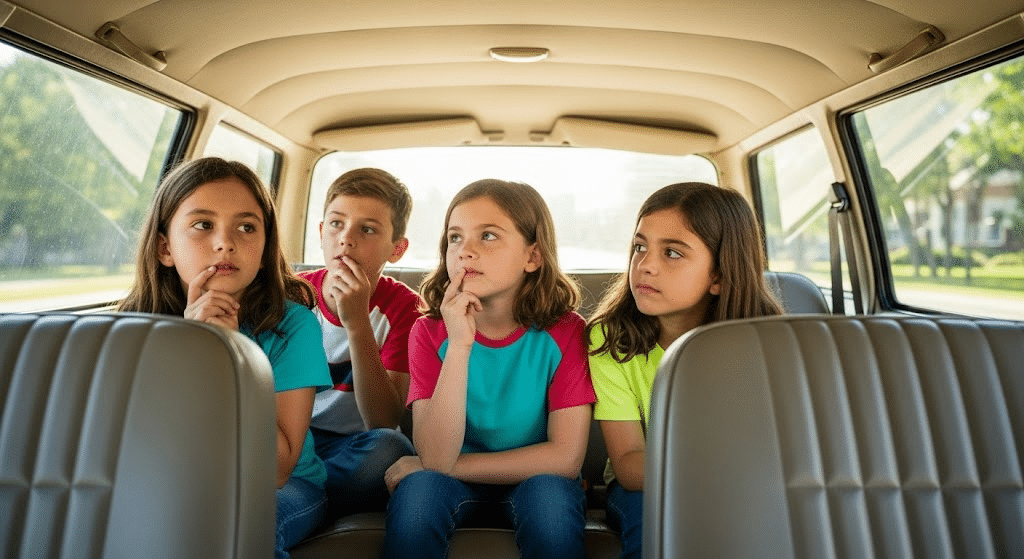
Another one of the popular road trip games for kids. One player thinks of an object, and the others have 20 questions to guess what it is by asking yes/no questions.
- Why it works: Encourages critical thinking and deductive reasoning.
- How to play: Players ask yes/no questions until they guess the object.
- Tip: Keep the object simple for younger kids.
3. The License Plate Game

Kids try to spot license plates from different states or countries, keeping track of which ones they’ve seen.
- Why it works: Encourages environmental awareness and teaches geography.
- How to play: Record the license plates spotted from different locations.
- Tip: Have a Map to Mark Off States and Make It More Interactive.
4. Road Trip Bingo
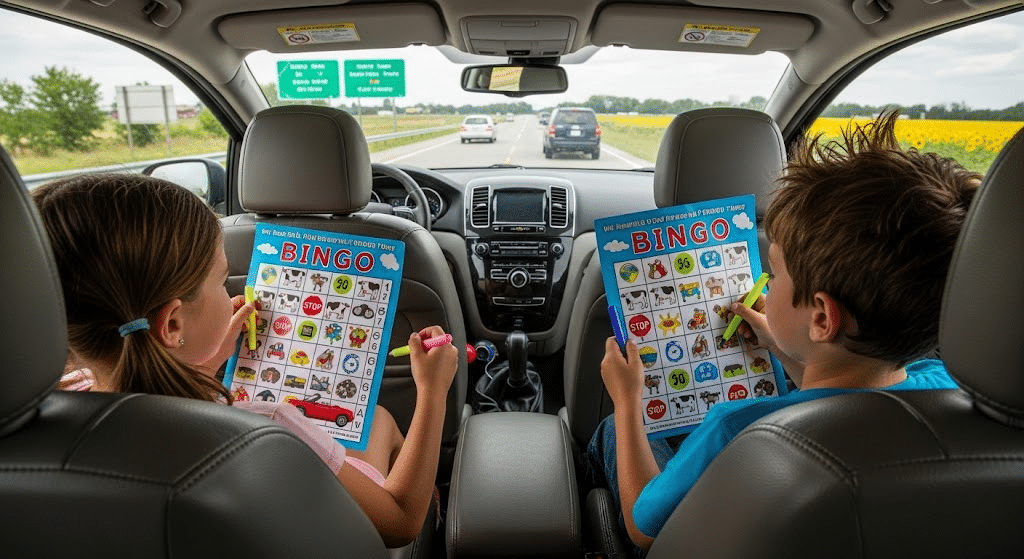
Create bingo cards with items commonly seen on a road trip (like cows, stop signs, or a specific color car) and mark them off as you see them.
- Why it works: Combines observation with friendly competition.
- How to play: Mark off items as you see them on your bingo card.
- Tip: Customize the bingo cards to fit your route or local surroundings.
5. I’m Going on A Picnic
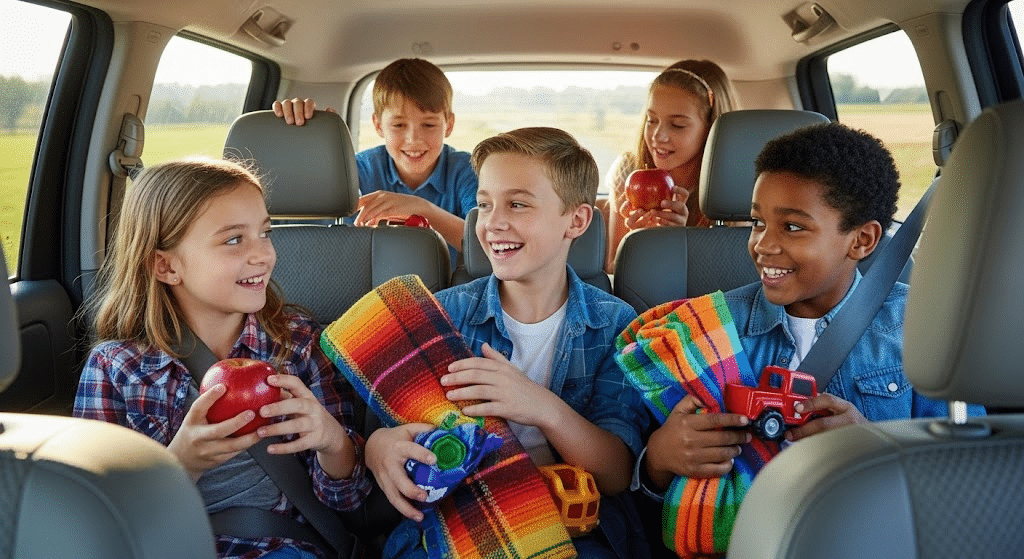
Players take turns saying, “i’m going on a picnic and i’m bringing…” and list items in alphabetical order.
- Why it works: A fun way to practice the alphabet and memory skills.
- How to play: Each player adds a new item, starting with the next letter in the alphabet.
- Tip: Make the items funny and creative to keep the game fun.
6. Would You Rather
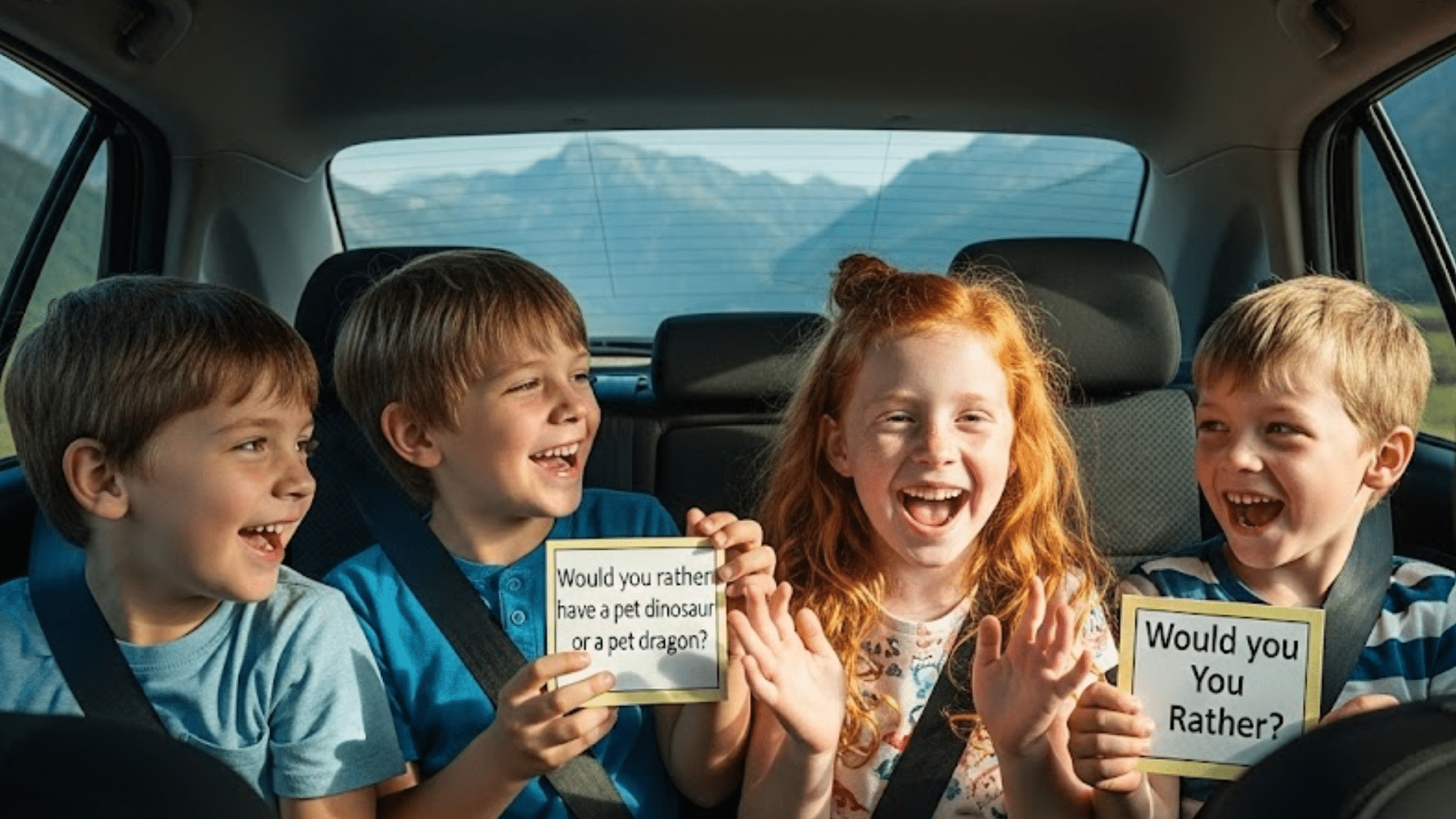
Ask fun and silly “would you rather” questions (e.g., “would you rather have a pet dinosaur or a pet dragon?”).
- Why it works: Sparks imagination and encourages conversation.
- How to play: Ask the group a “would you rather” question, and everyone answers.
- Tip: Keep the questions age-appropriate and light-hearted.
7. Alphabet Game
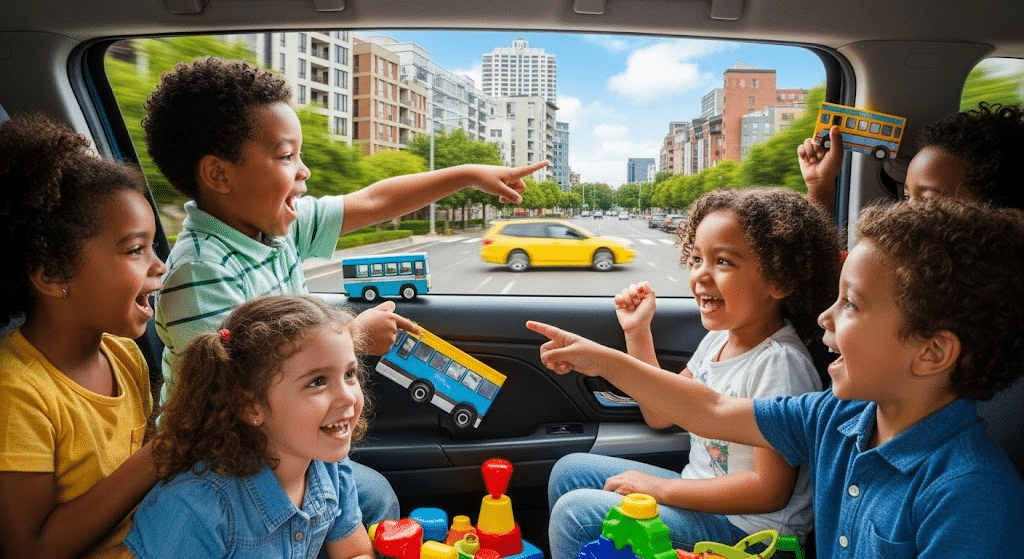
Players search for words on signs, license plates, and billboards that start with each letter of the alphabet, from A to Z.
- Why it works: Encourages letter recognition and observation.
- How to play: Look for words starting with each letter as you drive.
- Tip: Set a timer to make it more challenging and competitive.
8. Story Chain

One Player Starts a Story with A Sentence, and Each Subsequent Player Adds to It, Creating a Collaborative Tale.
- Why It Works: Promotes Creativity and Cooperative Play.
- How to Play: Each Person Adds a Sentence to The Story, Making It Longer and More Creative.
- Tip: Encourage Wild and Fun Twists to Keep It Interesting.
9. Guess Who?
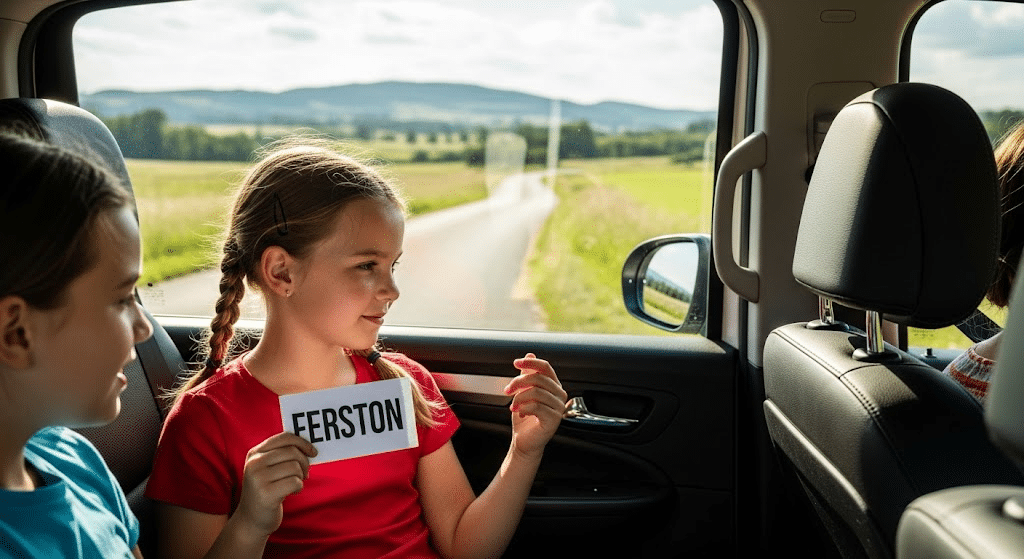
In This 2-Player Game, Kids Ask Yes-Or-No Questions to Figure out The Other Player’s Mystery Character.
- Why It Works: boosts Questioning and Deduction Skills.
- How to Play: Ask yes/no Questions until You Figure out The Character.
- Tip: Use characters that Everyone is familiar with to make it easier
10. Cow Count
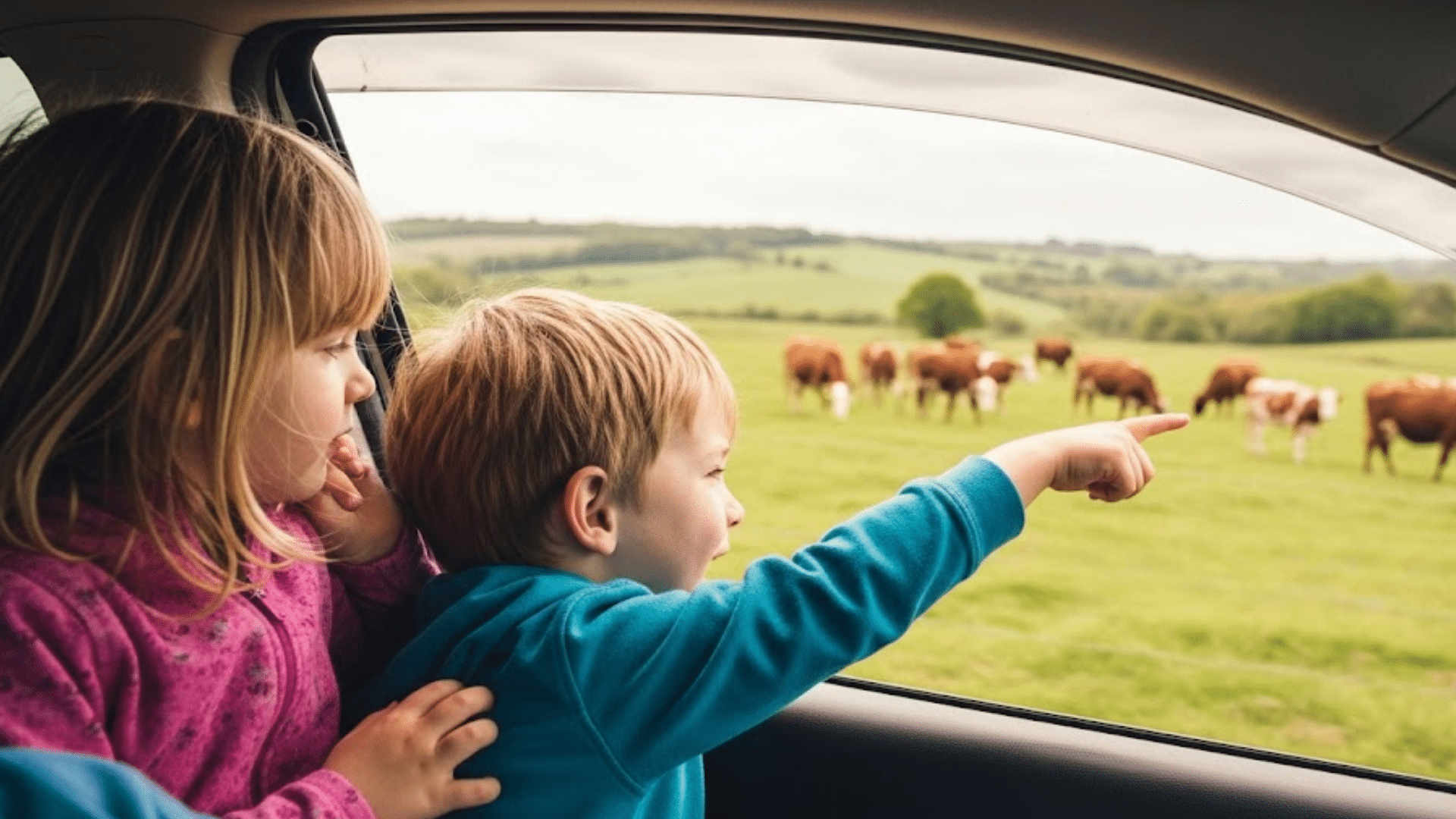
Every time you pass a cow, a player gets to count one. The person who counts the most cows by the end of the trip wins.
- Why It Works: Encourages focus and counting practice.
- How to play: Spot cows and count them as you pass by.
- Tip: Set a timer for a limited time to make it more competitive.
11. Travel Scavenger Hunt
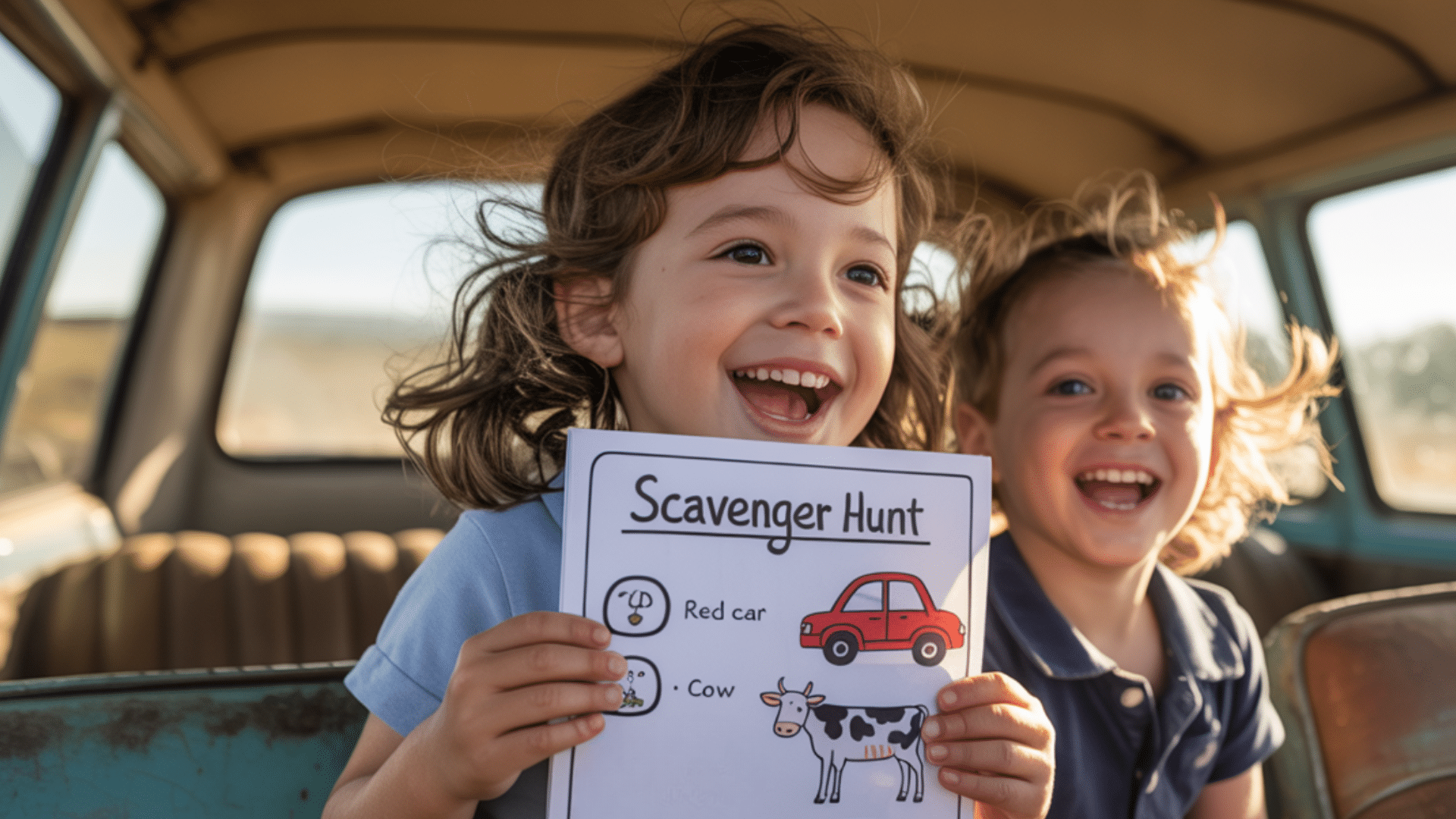
Create a List of Items for Kids to Look for During the Drive, Like a Red Car, a Specific Road Sign, or A Cloud Shaped Like an Animal.
- Why it works: It keeps kids engaged and teaches them to focus on their surroundings.
- How to play: Check off items as you spot them during the trip.
- Tip: Customize the list to include items specific to the area you’re traveling through.
12. Guess the Sound
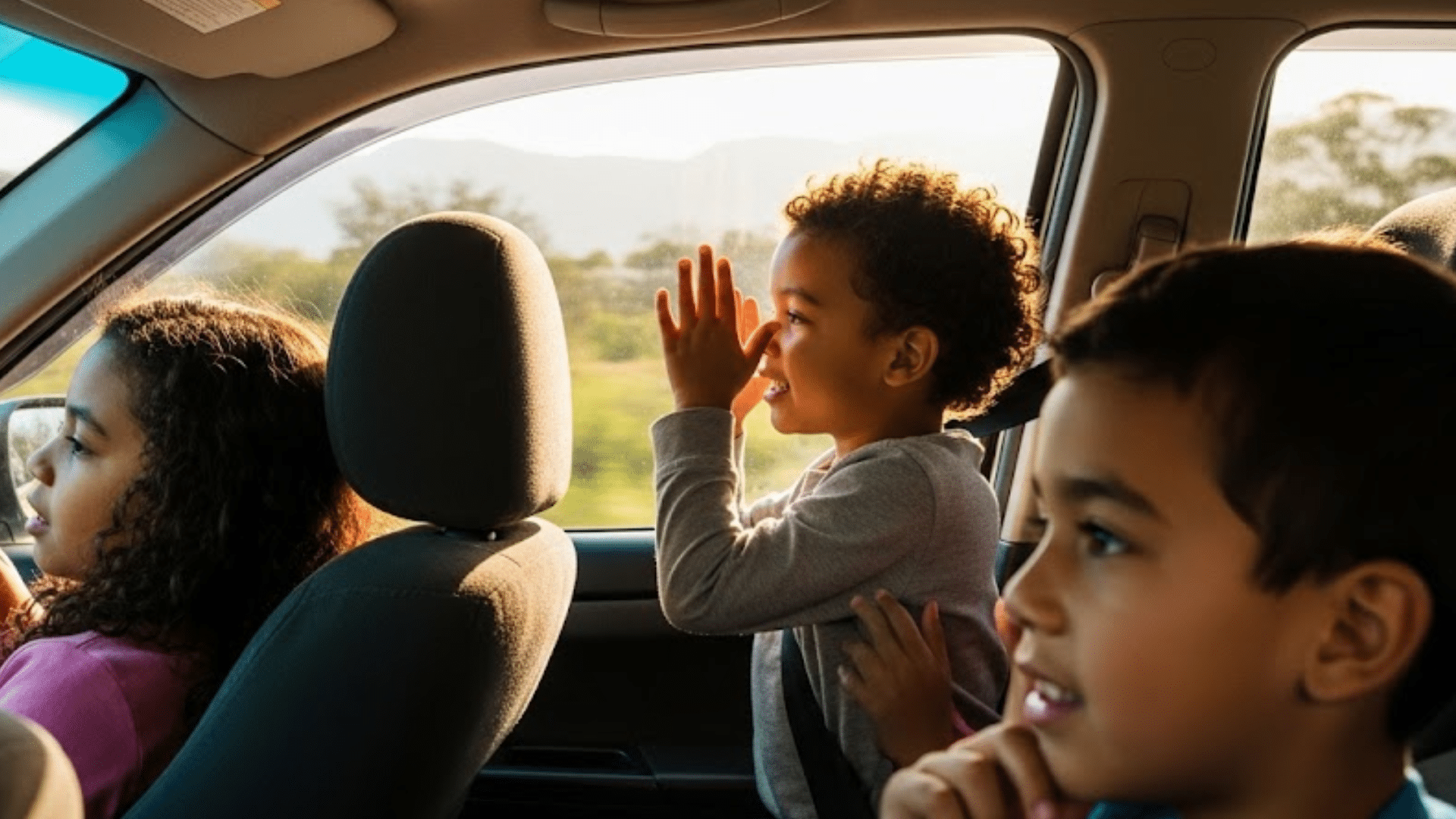
One player makes a sound (such as tapping on the window or honking a horn), and the others try to guess what it is.
- Why it works: Improves auditory awareness and memory.
- How to play: The sound-maker makes a noise, and others guess what it is.
- Tip: Keep the sounds recognizable and straightforward for younger kids.
13. Car Color Game
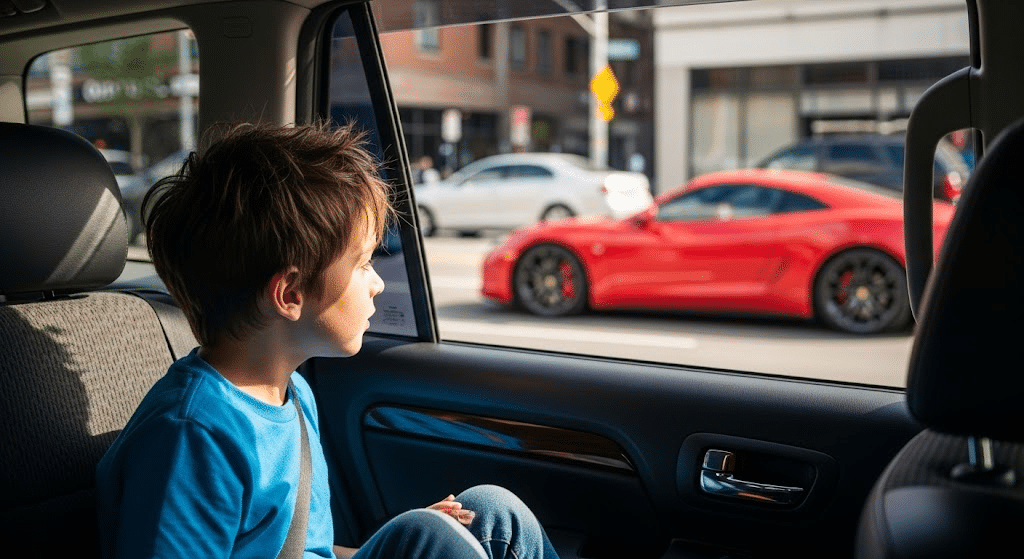
Assign each player a color, and the goal is to spot cars of that color; the player who spots the most vehicles of their color wins.
- Why it works: Encourages focus and observation of colors.
- How to play: Look for cars of your assigned color as you drive.
- Tip: Use bright colors to make the game more challenging and fun.
14. Geography Challenge

One player names a country or city, and the next player must name one that starts with the last letter of the previous place.
- Why it works: Encourages knowledge of geography and creative thinking.
- How to play: Take turns naming places based on the last letter of the previous one.
- Tip: Set a time limit for responses to keep the pace exciting.
15. The Movie Game
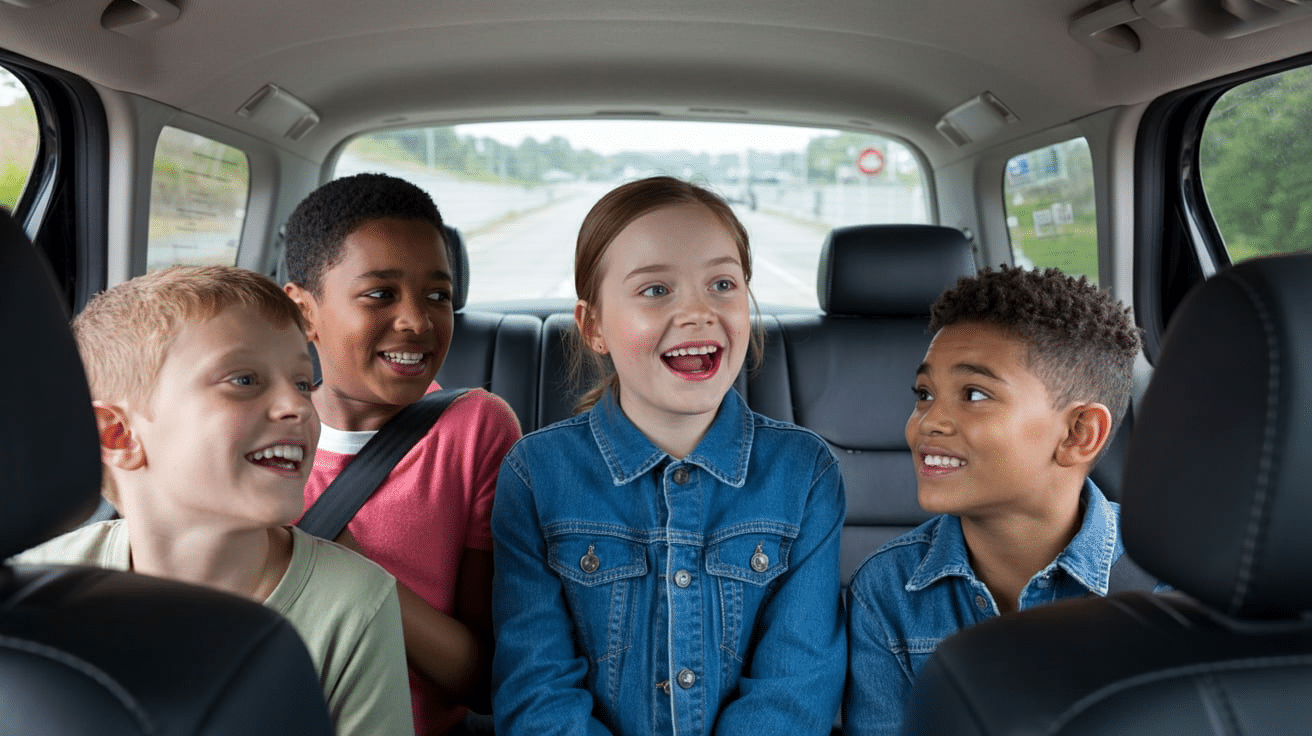
One player says a line from a movie, and the others try to guess which movie it’s from.
- Why it works: Tests movie knowledge and listening skills.
- How to play: Provide movie lines and guess the title.
- Tip: Use popular, easy-to-recognize movies for younger kids.
16. Silent Game

A challenge to see who can remain silent the longest without laughing or talking.
- Why it works: Encourages self-control and focus.
- How to play: Players stay silent, and the first one to speak or laugh loses.
- Tip: Make it more fun by setting a timer for added pressure.
17. Car Karaoke
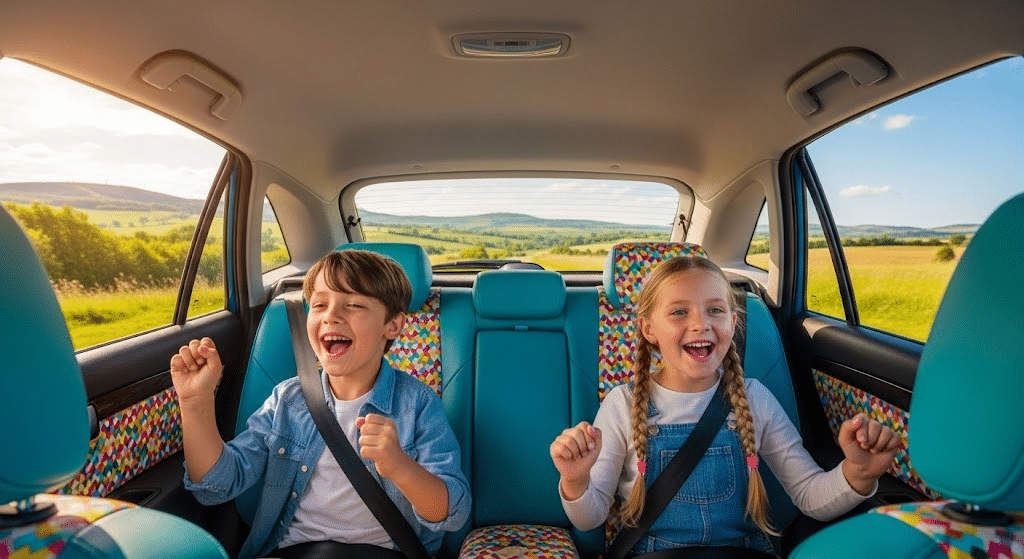
Kids sing their favorite songs while the rest of the car listens or joins in.
- Why it works: It encourages fun and creativity while helping to burn off energy.
- How to play: Pick a song, and everyone sings along.
- Tip: Create a playlist of everyone’s favorite songs before the trip.
18. Rock, Paper, Scissors Tournament
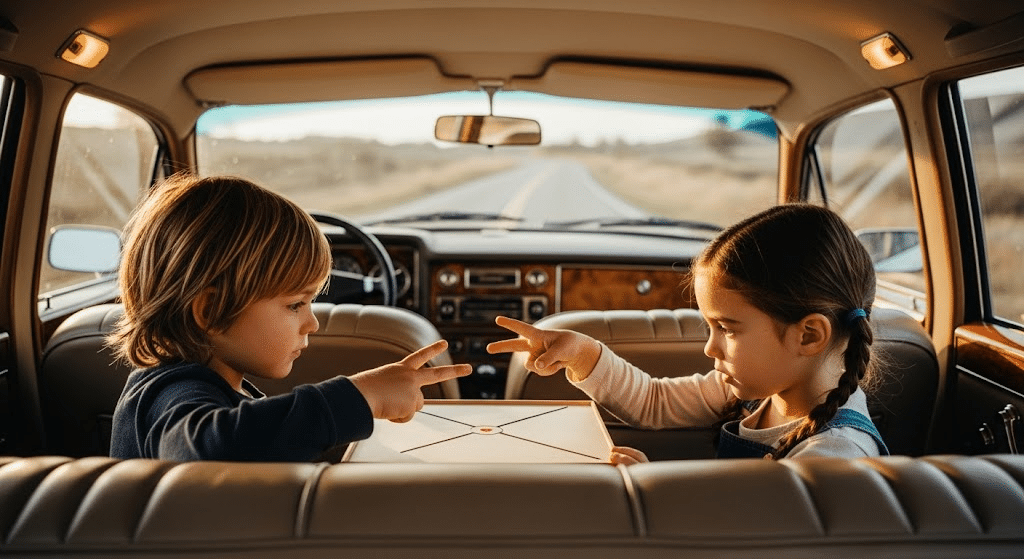
A quick game of rock, paper, scissors to determine the winner.
- Why it works: Simple and quick, great for short distractions.
- How to play: Players compete in rounds until one person wins.
- Tip: Have a best-of-three series for more excitement.
19. Flashlight Tag
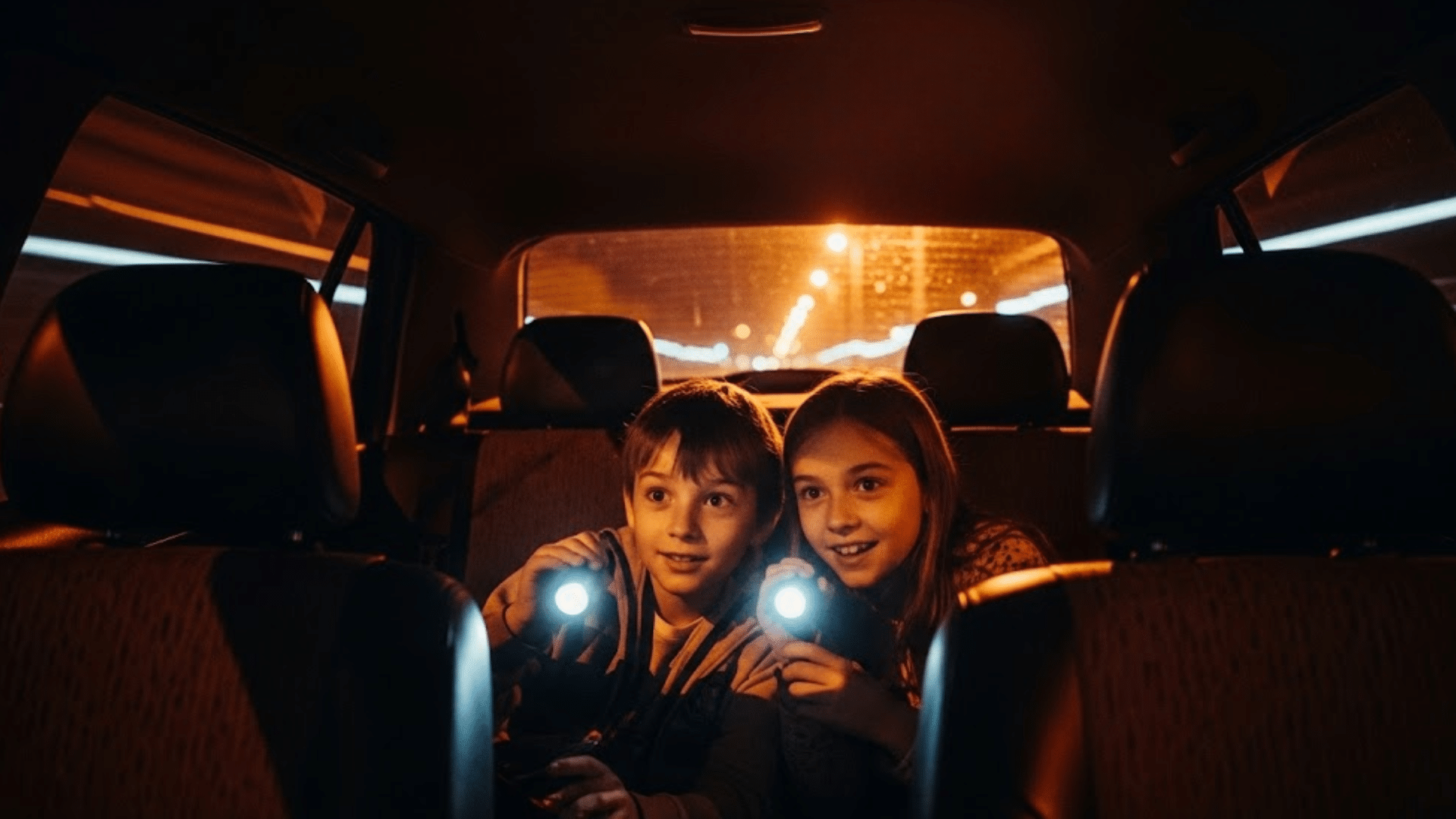
At night, use flashlights to play a game where players must spot one another by shining their flashlights on them.
- Why it works: Encourages movement and a bit of stealthy fun.
- How to play: One player hides, and the others use flashlights to find them.
- Tip: Limit the area to keep the game manageable.
20. The ‘What’s Missing’ Game
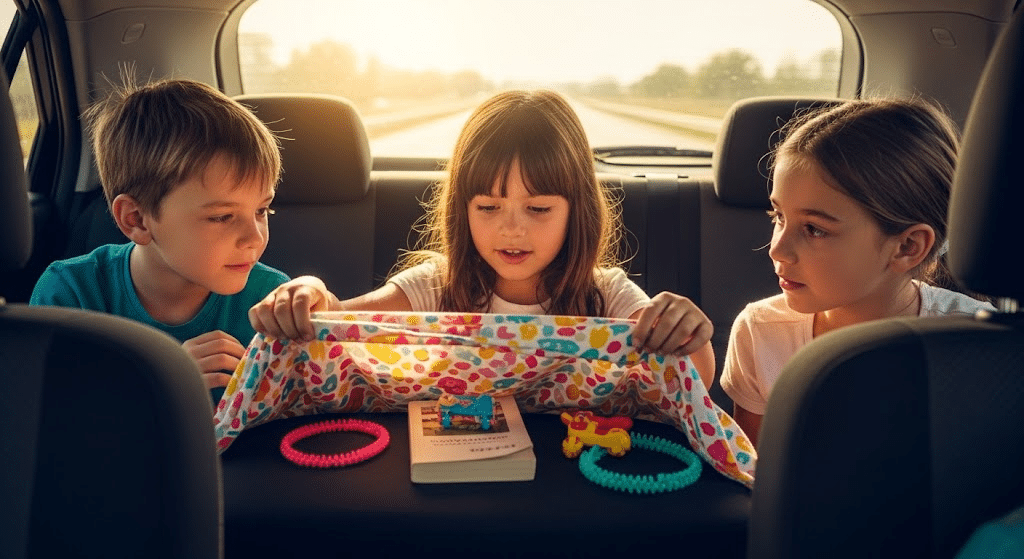
Lay out a few objects, let kids study them, then cover them up and remove one. Players guess what’s missing.
- Why it works: Improves memory and attention to detail.
- How to play: Display objects, cover them, remove one, and let kids guess.
- Tip: Start with 3-4 objects, then increase the difficulty as they get better.
21. Find the Number Game
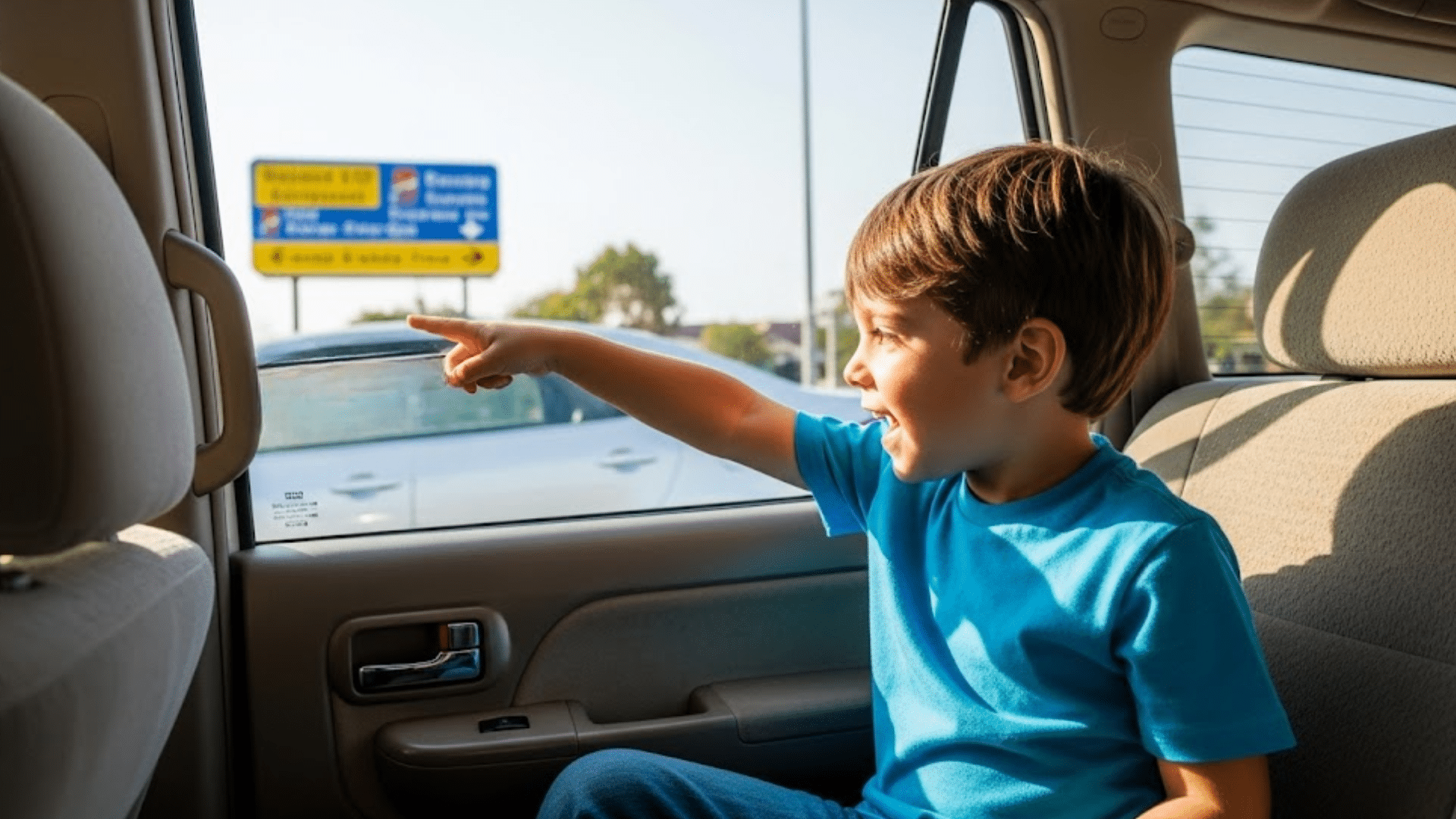
Players search for a specific number on road signs or license plates.
- Why it works: Improves number recognition and observation.
- How to play: Choose a number, and everyone looks for it on signs or plates.
- Tip: Change the number periodically to keep it interesting.
22. Shadow Puppets
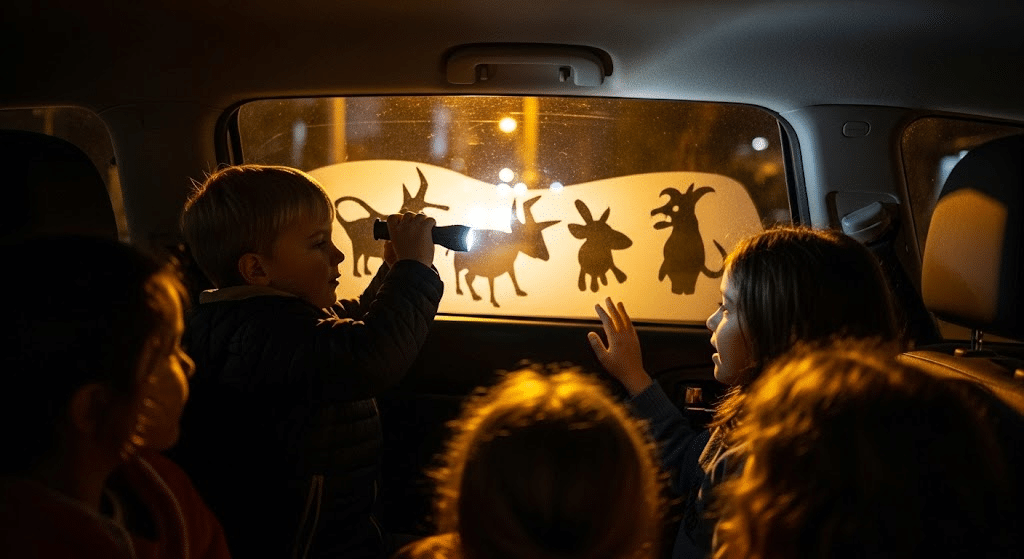
Use your hands or objects to make shadows on the window during the ride.
- Why it works: Sparks creativity and provides entertainment during low-light conditions.
- How to play: Create shapes or animals using your hands and try to guess them.
- Tip: Use a flashlight at night to improve shadow visibility.
23. Memory Match
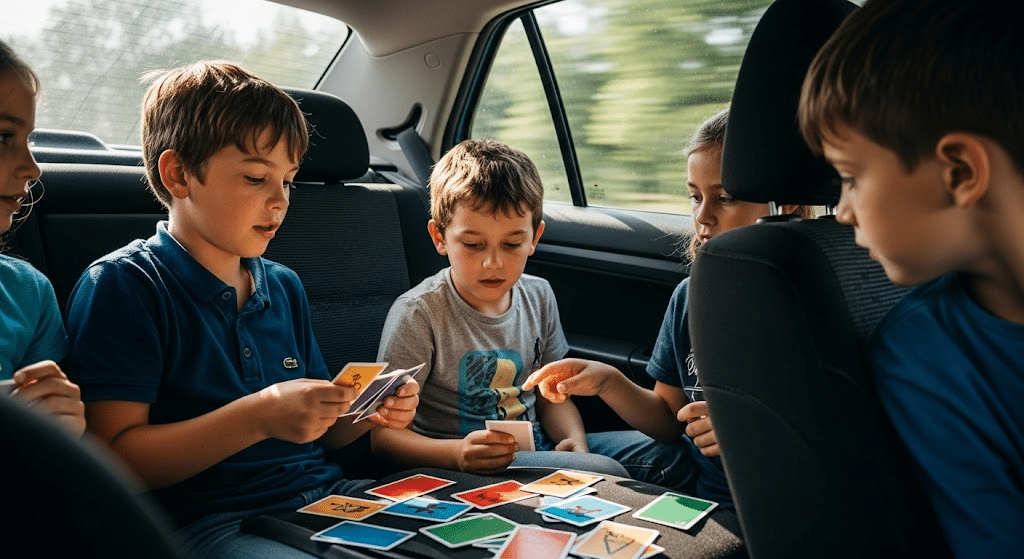
Use a deck of cards or printed images for a memory-matching game.
- Why it works: Strengthens memory and concentration.
- How to play: Lay out cards face down and take turns flipping them to match pairs.
- Tip: Use picture cards for younger kids to make it easier.
24. Road Trip Trivia
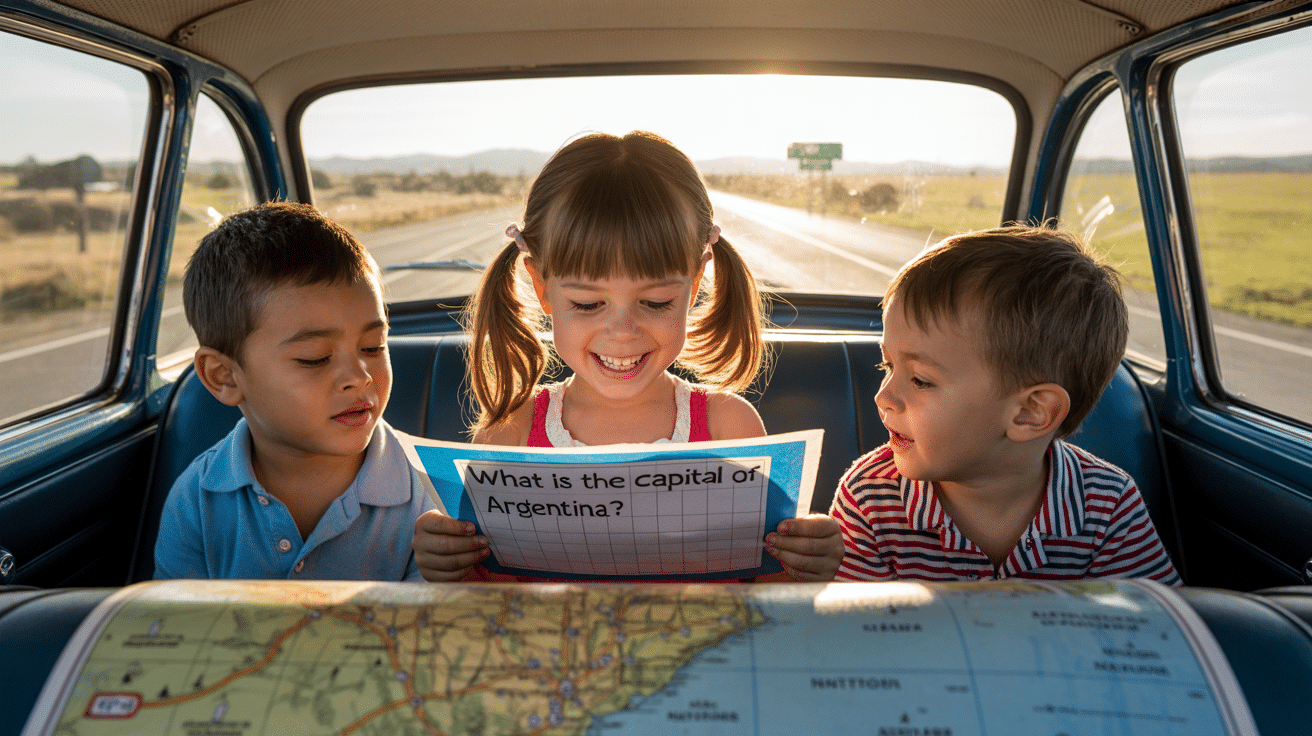
Create Trivia Questions About Places, Animals, or Things You Might See on The Road.
- Why it works: It builds knowledge of the environment and geography.
- How to play: Ask trivia questions and keep score to see who answers the most correctly.
- Tip: Tailor the questions to the age and interests of the kids.
25. Find the Shape
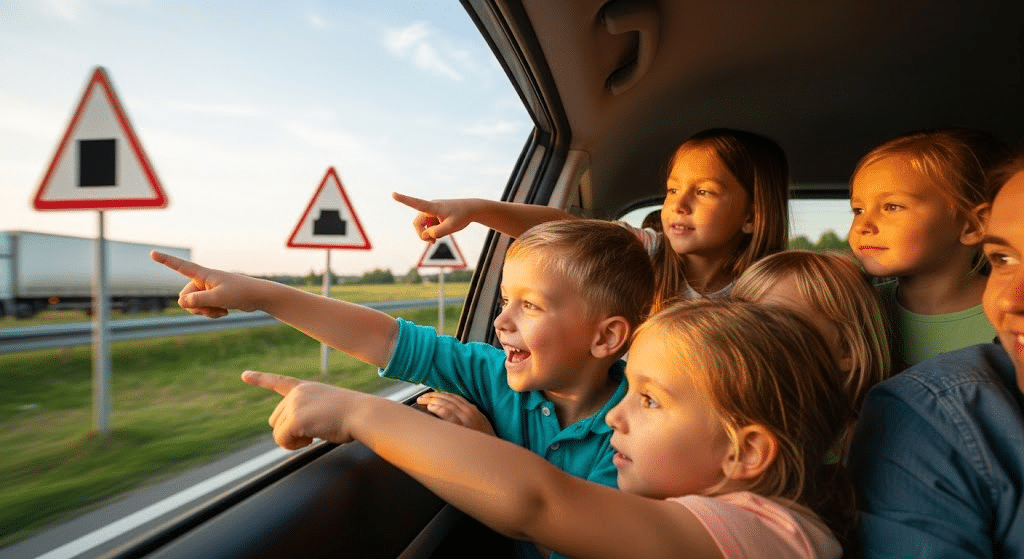
Look for specific shapes (e.g., triangles, squares, or circles) in the environment and call them out when spotted.
- Why it works: Promotes shape recognition and awareness of surroundings.
- How to play: Assign shapes to each player and look for them during the drive.
- Tip: Start with basic shapes for younger children and gradually increase difficulty with more complex shapes.
26. Rhyming Relay

One player says a word, and others take turns saying words that rhyme with it until no one can think of any more.
- Why it works: Encourages creative thinking and language development.
- How to play: The first player says a word, and the others take turns adding rhyming words.
- Tip: Start with simple words and gradually increase their difficulty as the game progresses.
27. Imaginary Road Trip
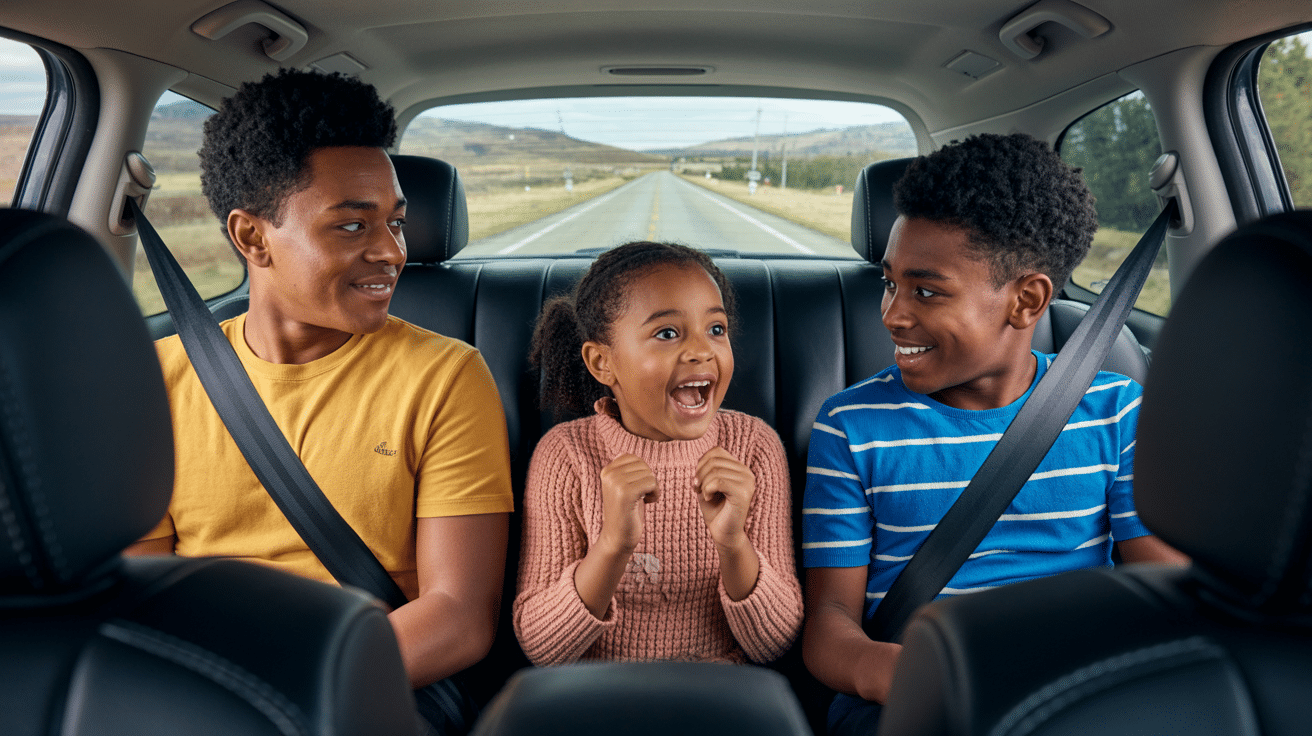
Have kids imagine they’re traveling to a new place and create a fun story about their adventures.
- Why it works: Stimulates creativity and encourages imaginative thinking.
- How to play: Ask kids where they’d go and what they’d do, and let them come up with the details.
- Tip: Give them a few starting prompts, such as “If you were in a jungle, what would you find?”
Things to Keep in Mind
Road trip games sound amazing in theory, but let’s be real; trying to entertain kids while dodging that one driver who apparently got their license from a cereal box requires some strategic thinking.
- Age-appropriate is everything: What thrills a 10-year-old might bore a 5-year-old to tears.
- Keep supplies minimal: Nobody needs 47 tiny game pieces rolling around the car floor.
- Have backup plans: Because kids change their minds faster than traffic lights.
- Consider car sickness: Some games work better for queasy travelers than others.
- Include everyone: Make sure nobody feels left out, including that “too cool” teenager.
- Safety first, fun second: Driver stays focused, passengers stay buckled, and everyone keeps their hands inside the vehicle.
Conclusion
Road trip games aren’t just about killing time; they’re about turning those long highway stretches into unexpected memory-making machines.
Sure, someone’s still going to spill juice, and yes, there will probably be at least one “But I don’t want to play anymore!” moment.
But here’s what really happens: kids learn creativity, siblings actually bond instead of bicker, and parents remember why they thought a road trip was a good idea.
Those silly games become the stories everyone talks about years later.










